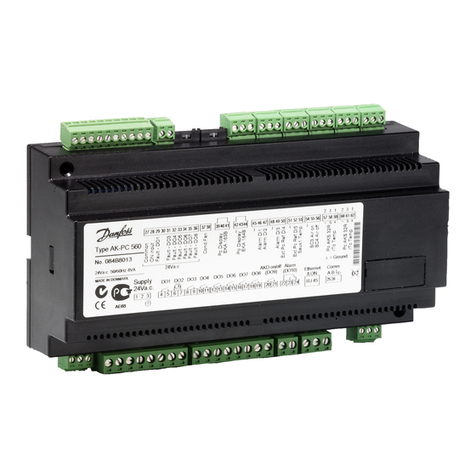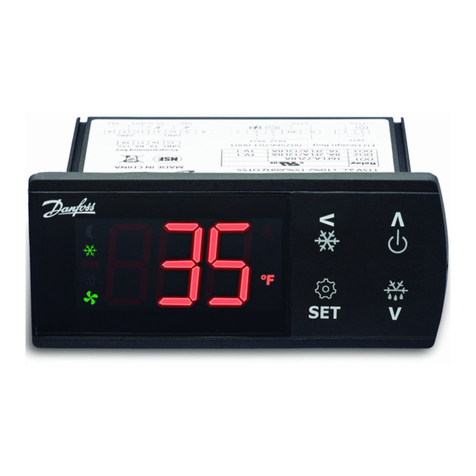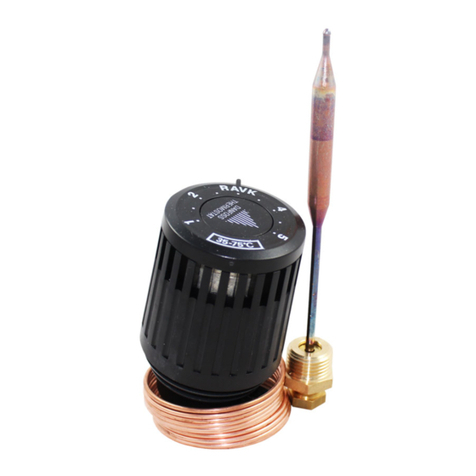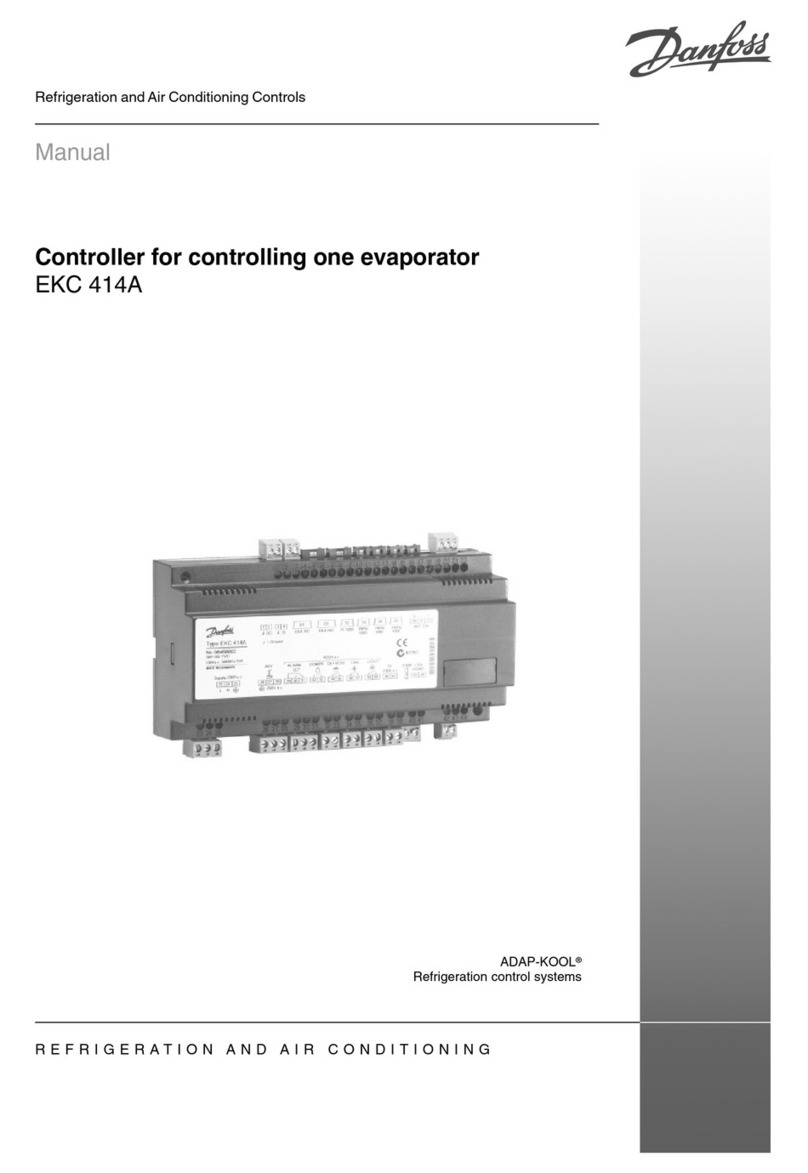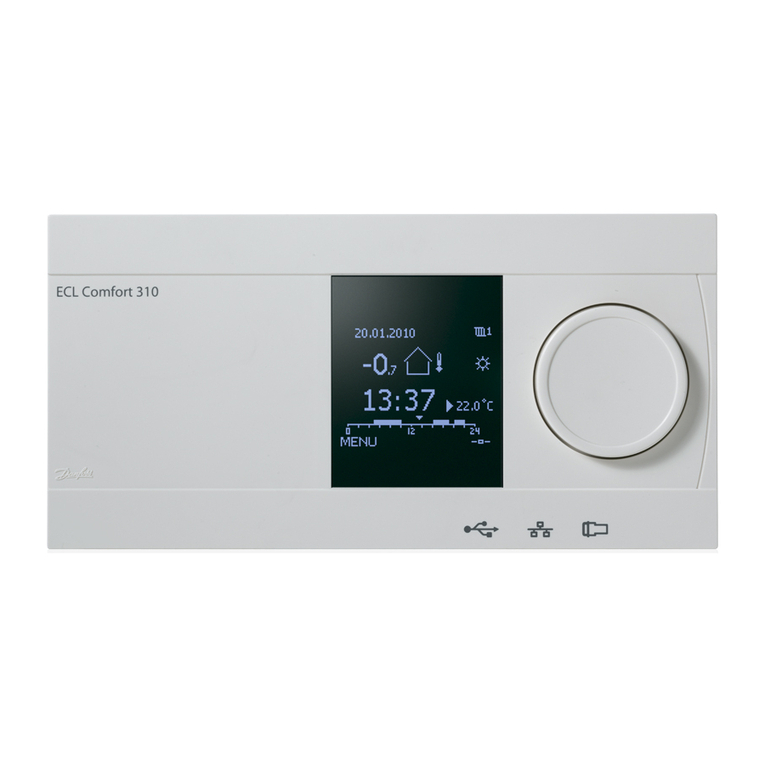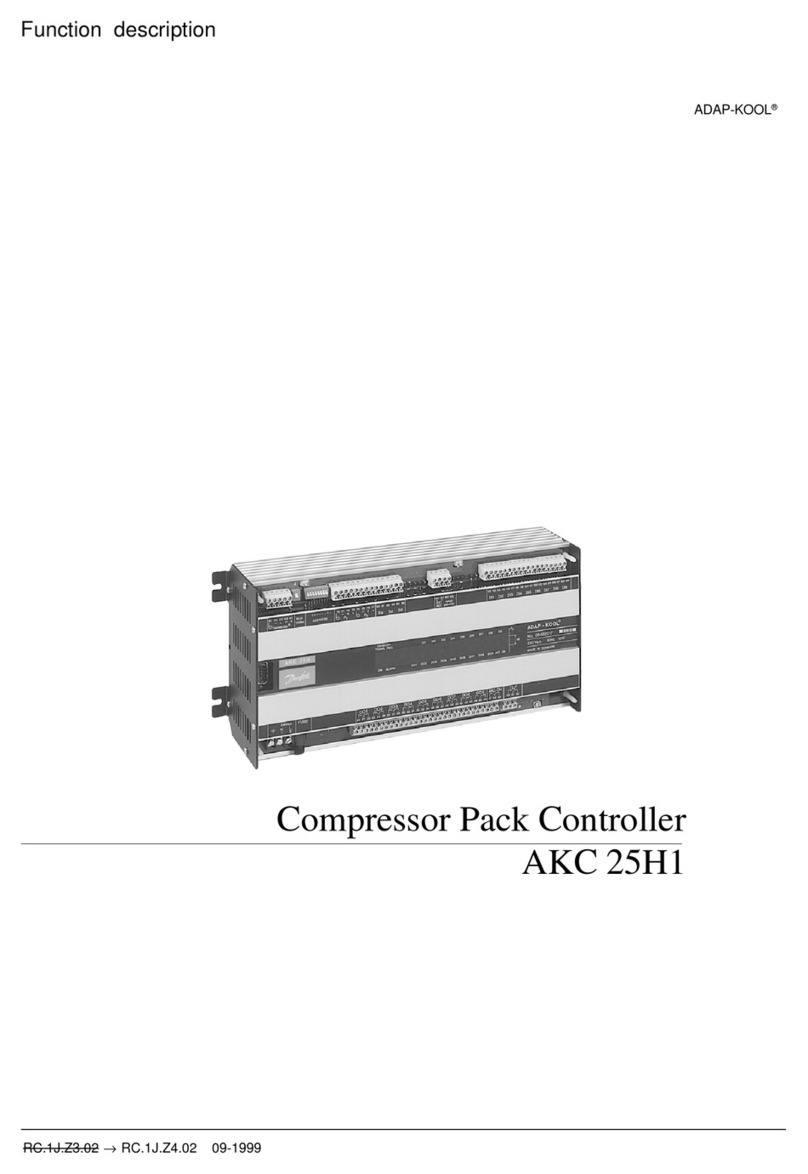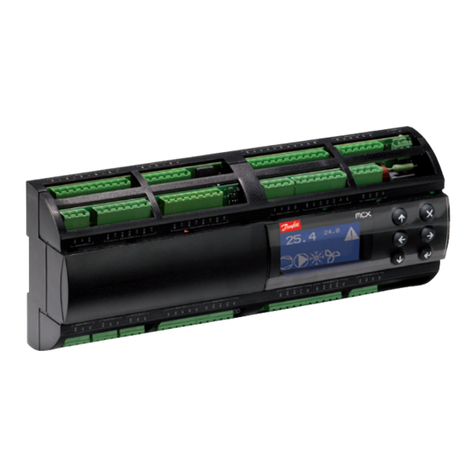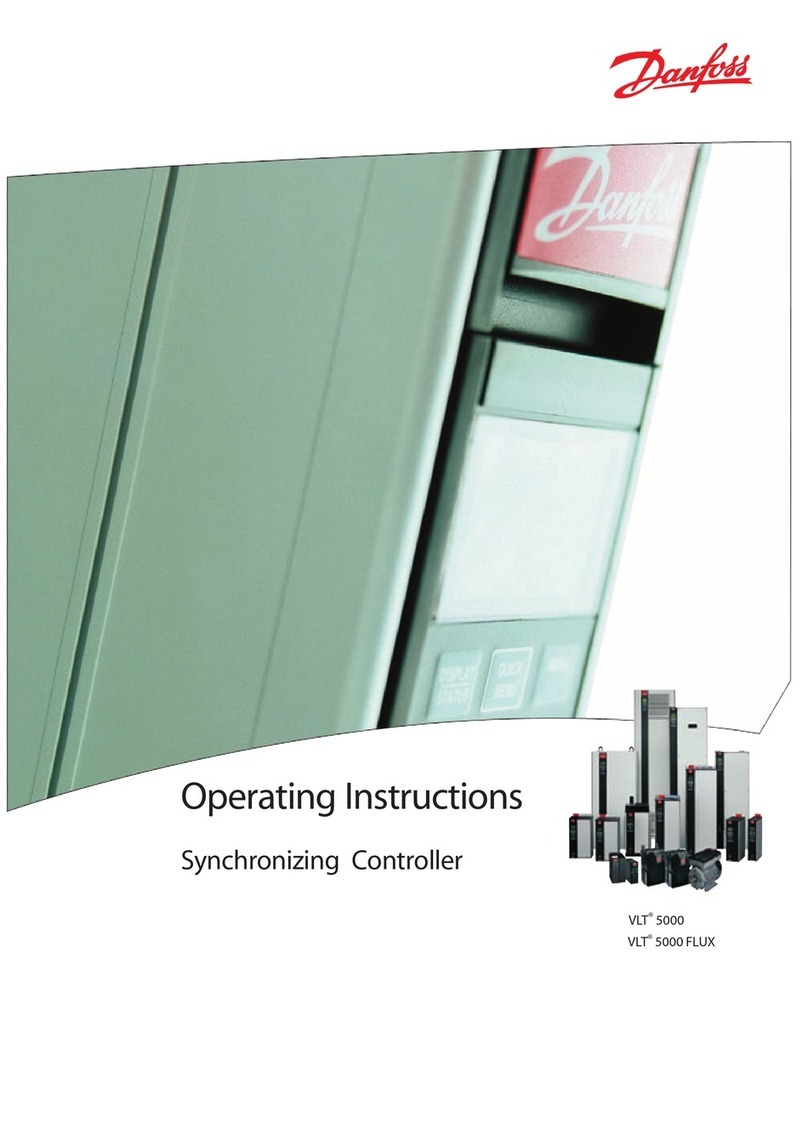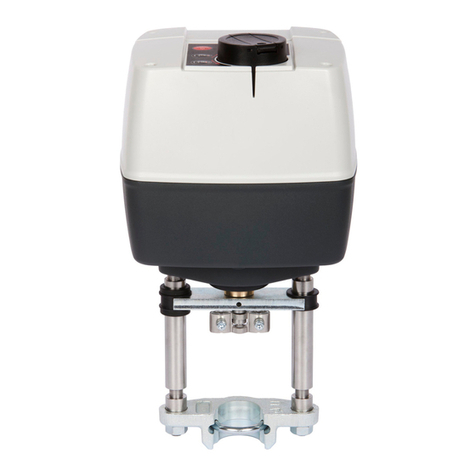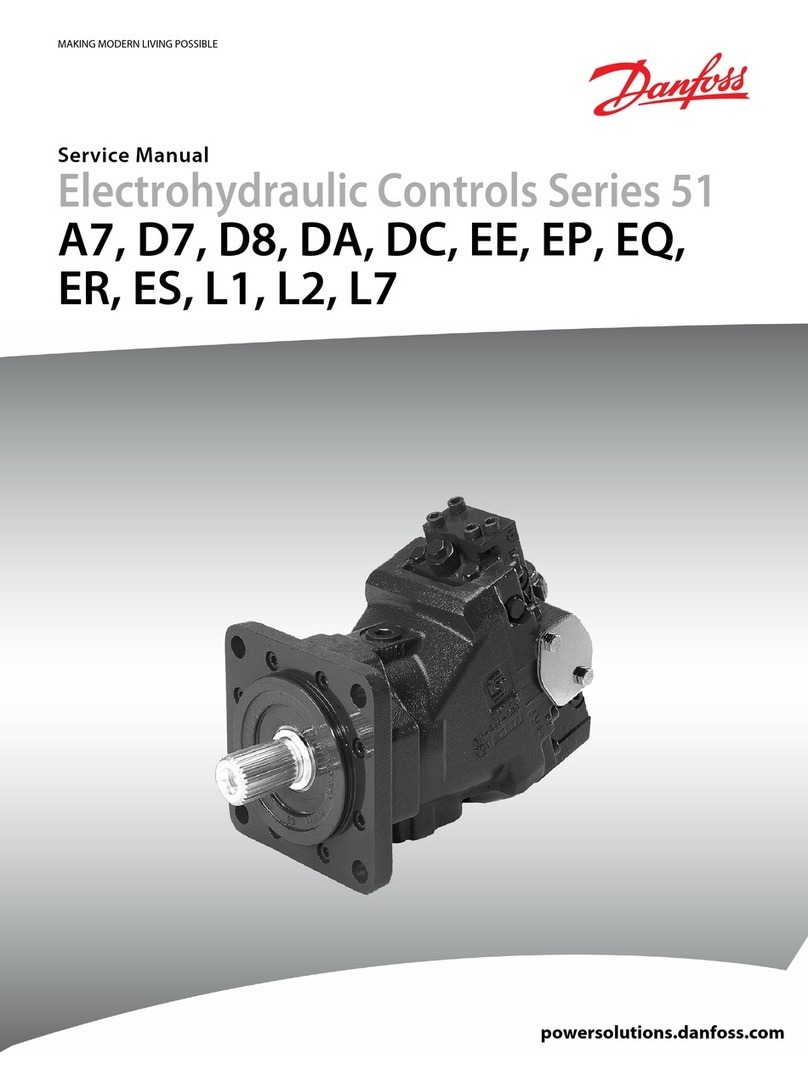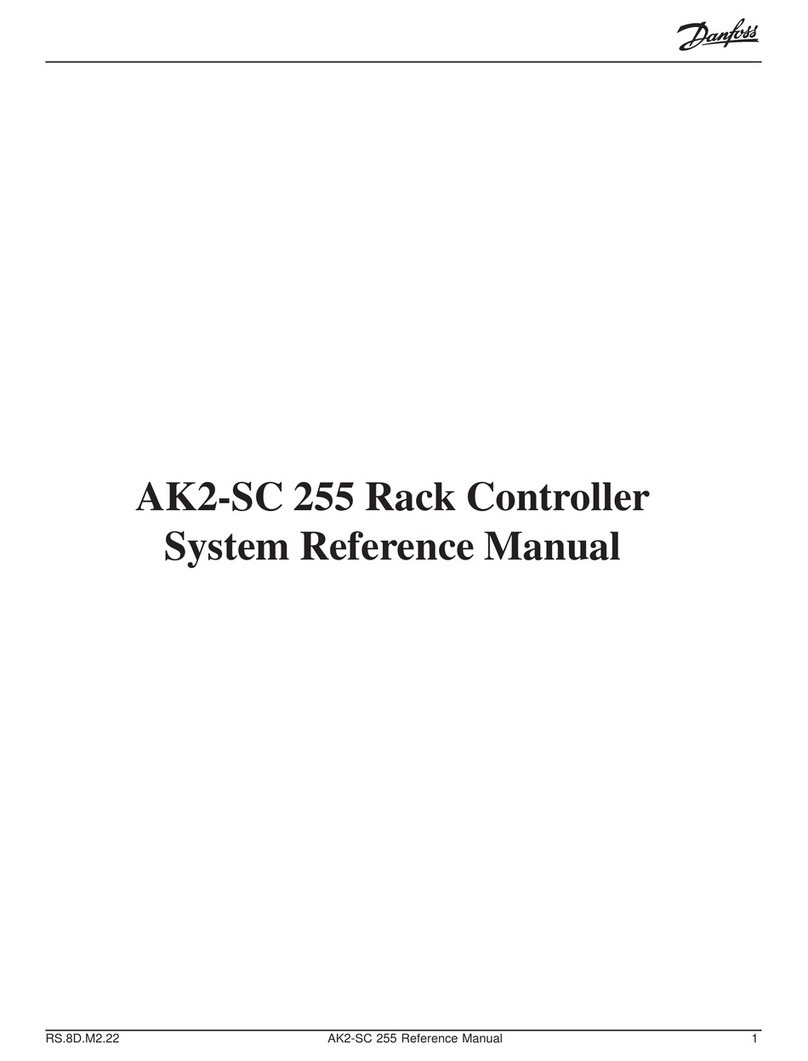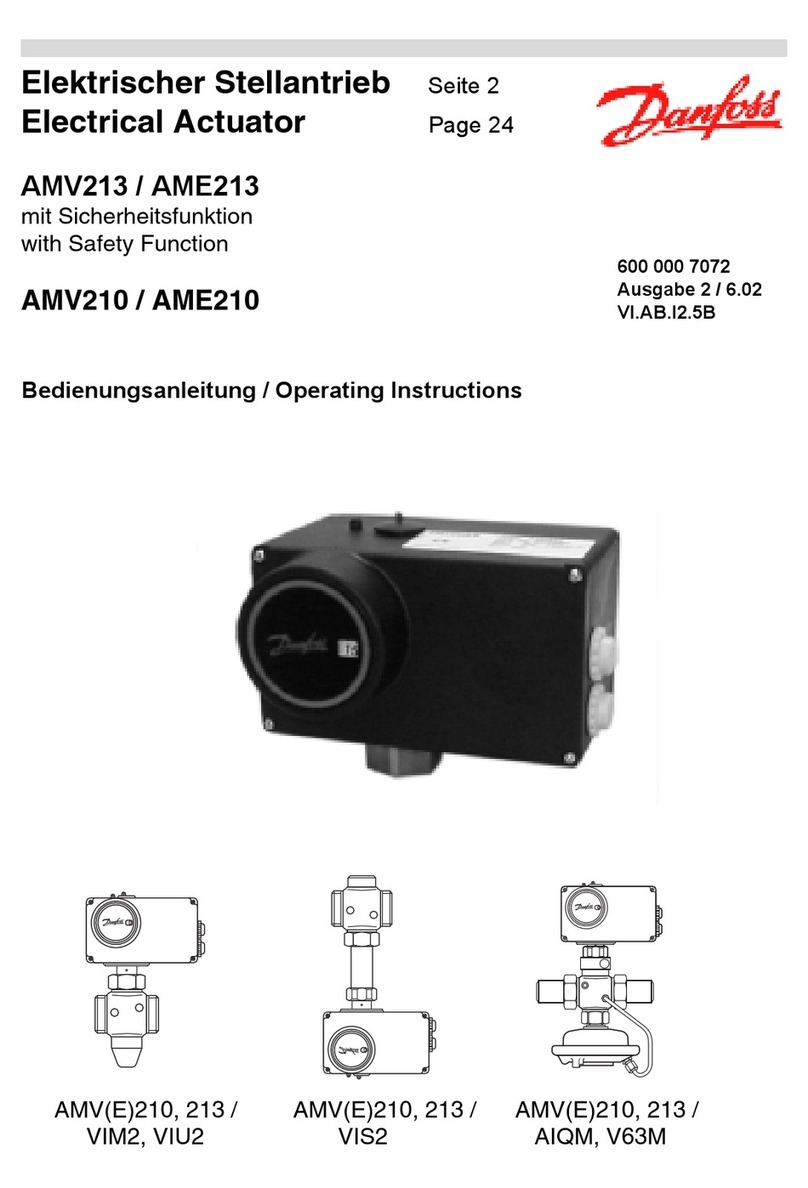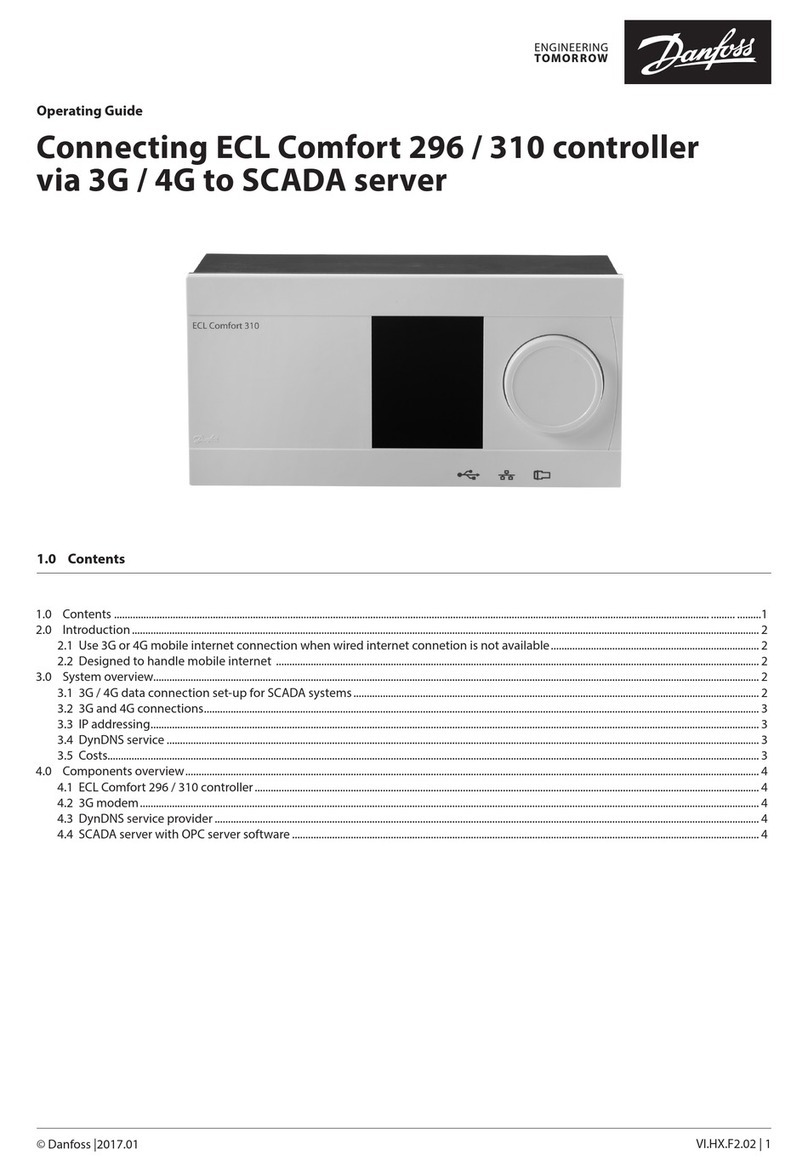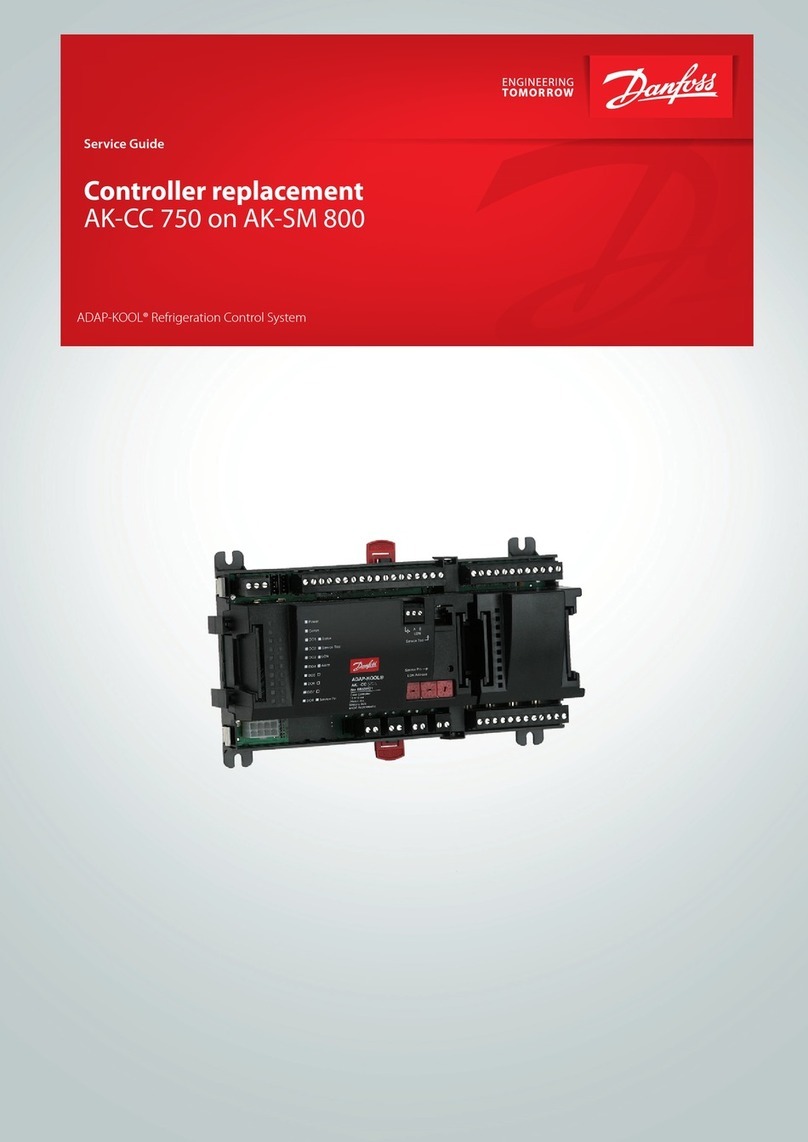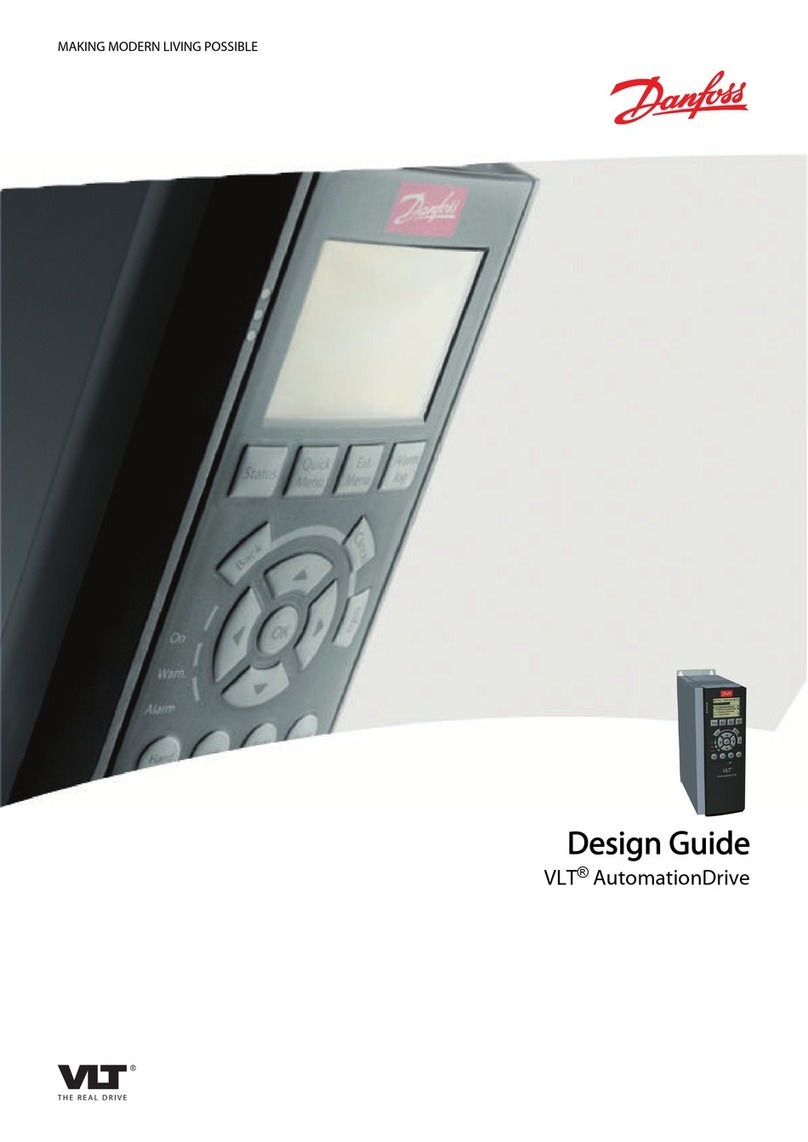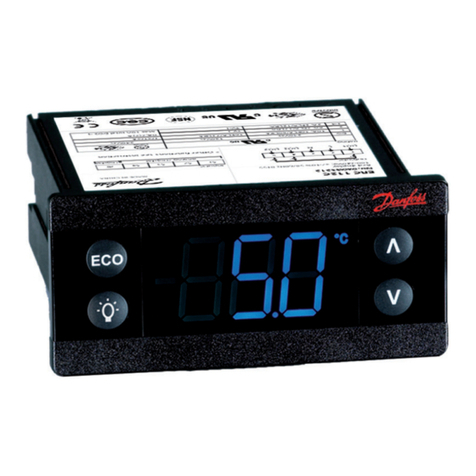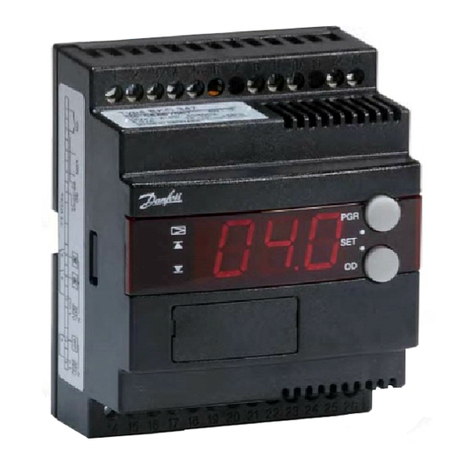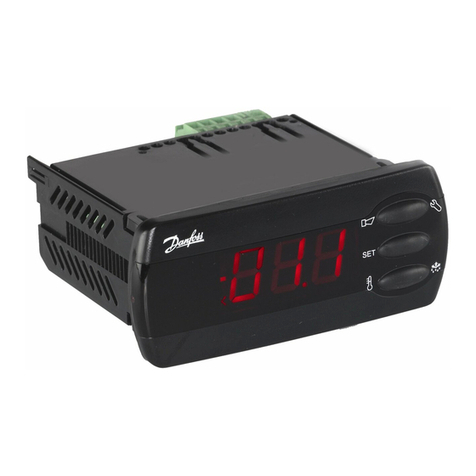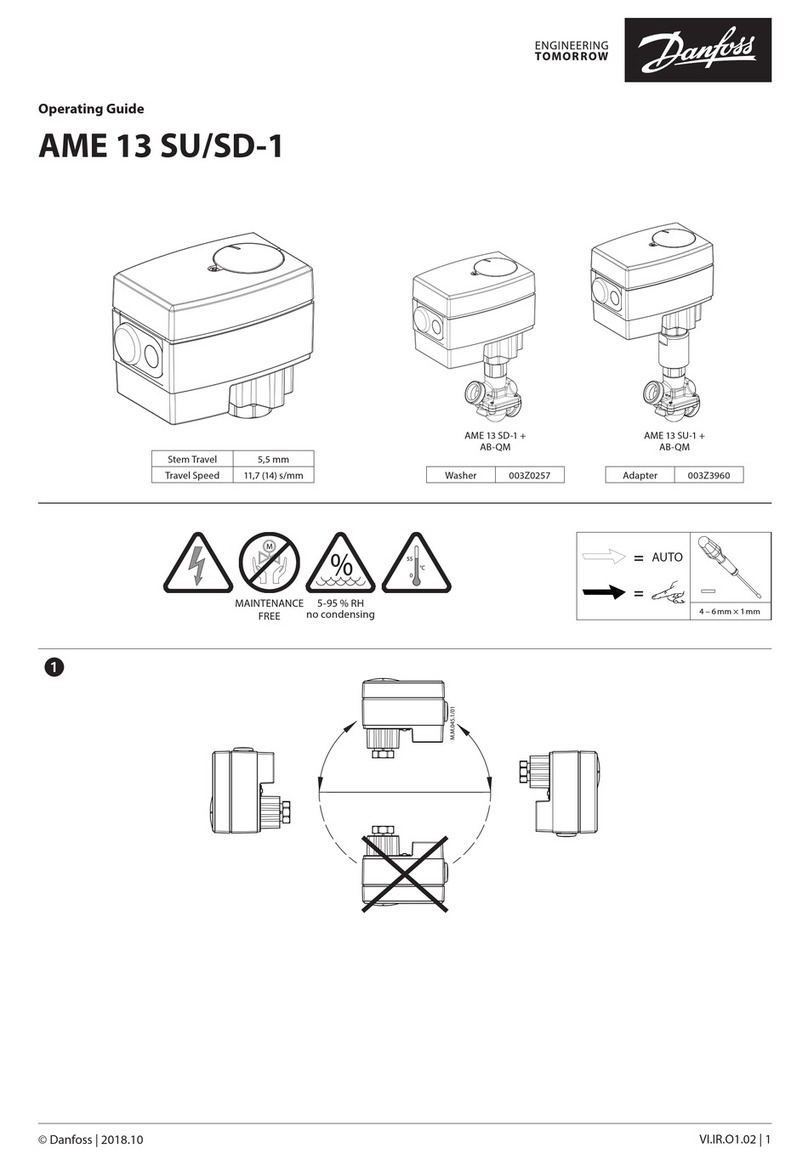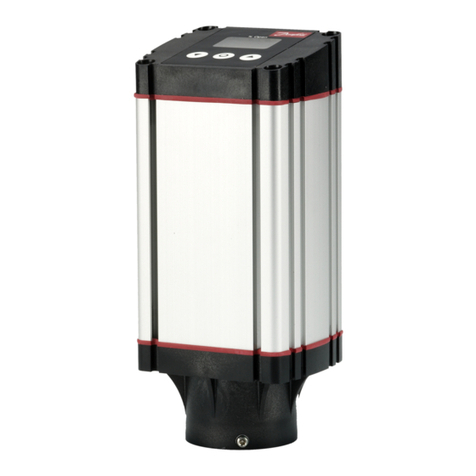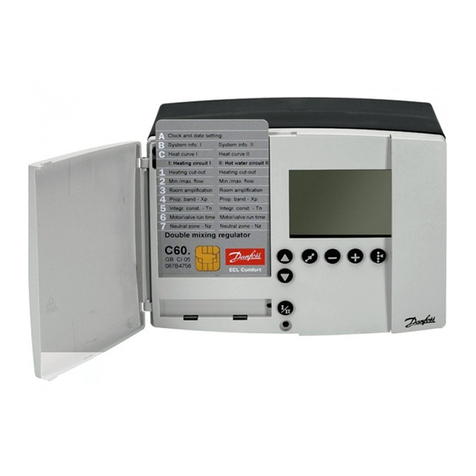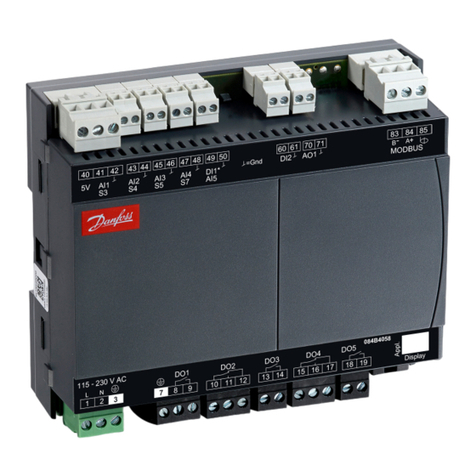
AQ00008644697902-0003018 | © Danfoss | 2022.12
AFPQ (4) / VFQ 2(1)
ENGLISH
Safety Notes
Prior to assembly and commissioning
to avoid injury of persons and
damages of the devices, it is
absolutely necessary to carefully read and
observe these instructions.
Necessary assembly, start-up, and maintenance
work must be performed only by qualified,
trained and authorized personnel.
Prior to assembly and maintenance work on the
controller, the system must be:
• depressurized,
• cooled down,
• emptied and
• cleaned.
Please comply with the instructions of the
system manufacturer or system operator.
Definition of Application
The controller is used for flow rate limitation
and differential pressure control of water and
water glycol mixtures for heating, district
heating and cooling systems.
The technical data on the rating plates
determine the use.
Scope of Delivery ❶
Accessory, for connection to flow supply and return flow
Assembly
Admissible Installation Positions ❷
DN 15-80
media temperatures up to 120 °C:
Can be installed in any position.
DN 100–250 all temperatures and DN 15-80
media temperatures > 120 °C:
Installation only permitted in horizontal
pipelines with the actuator hanging
downwards.
Installation Location and
Installation Scheme ❸
AFPQ/VFQ 2(1) return flow mounting
AFPQ 4/VFQ 2(1) supply flow mounting
Valve Installation ❹
1. Install strainer ①before the controller.
2. Rinse system prior to installing the valve.
3. Observe flow direction ②on the valve body
Flanges③in the pipeline must be in
parallelpositionand sealingsurfaces
must be clean and without any
damage.
4. Install valve.
5. Tighten screws crosswise in 3 steps up to the
max. torque.
Valve and Actuator Mounting ❺
1. Place actuator at the valve.
2. Align actuator, observe position of impulse
tube connection ①.
3. Tighten union nut ②Torque 100 Nm
Impulse Tube Mounting
Overview
③Mounting of impulse tube set
④Connection for copper impulse tubes
Procedure ❻
1. Remove plug ①at the valve.
For AFPQ 4 remove plug ②in addition
2. Screw in threaded joint ③with copper
seal④. Torque: 40 Nm
3. Verify the correct position of the cutting
ring ⑤.
4. DN 150/250 screw angle ⑥to the valve.
5. Screws angle to the pressure actuator.
⑦AFPQ
AFPQ 4 ❼ ① Mount two angles.
For DN150-250, screw additional angle ②.
6. Press impulse tube ⑤into the threaded joint
up to its stop.
7. Tighten union nut ④
Torque 40 Nm
Impulse Tube Mounting to Supply
Flow AFPQ
Return Flow AFPQ 4 ➑
Note
When installing seal pots ①, please observe the Installation In-
structions for the seal pots.
Which impulse tubes to use?
Use impulse tube set AF (1x) ②
Order No.: 003G1391 or use the following pipes:
Pipe
Stainless steel
DIN 17458, DIN 2391
Ø 10×0,8
Steel DIN 2391 Ø 10×1
Copper DIN 1754 Ø 10×1
Connection of impulse tube ③in the system
Return flow mounting ④
Supply flow mounting ⑤
Connection to the pipeline ➒①
No connection downwards ②, could become
dirty.
Impulse Tube Mounting (Copper)
1. Cut pipe into rectangular sections ③and
burr.
2. Insert sleeves ④on both sides.
3. Verify the correct posi
tion of the cutting
ring
⑤
.
4. Press impulse tube ⑥into the threaded
joint up to its stop.
5. Tighten union nut ⑦. Torque 40 Nm
Insulation ❿
Formedia temperatures up to 120 °C
the pressure actuator ①may alsobe
insulated.
Dismounting ⓫
Danger
Danger of injury by hot water!
Valvewithoutactuator is open ①,
seal ②isin the actuator.
Priortodismountingdepressurizesystem!
Carry out dismounting in reverse order to
mounting.
Leak and Pressure Tests ⓬
Pressure mustbeincreased slowly at
the +/– connection①until the max
testing pressure is reached.
Non-compliancemay causedamages atthe
actuator orvalve.
Max. test pressure [bar] with connected
impulse tubes: 25 bar
In case of higher test pressures, remove impulse
tubes at the pipeline ②and at the valve ③.
Close connections with plugs G ¼ ISO 228.
Observe nominal pressure ④of the valve.
Max. test pressure is 1,5 x PN
Filling the System, First Start-up ⓭
The returnflow pressure ①must not
exceedthe supply flow pressure ②.
Non-compliancemaycause
damagesatthe controller.
1. Open shut-off valve ③that is possibly
available in the impulse tube.
2. Open valves ④in the system.
3. Slowly open shut-off devices ⑤in the supply
flow.
4. Slowly open shut-off devices ⑥in the return
flow.
Putting out of Operation
1. Slowly close shut-off devices ⑤in the supply
flow.
2. Slowly close shut-off devices ⑥in the return
flow.
Set-point Setting
First set the differential pressure ⓮①.
Set-point range see rating plate ⓮②.
Differential Pressure Setting ⓯
1. Start system, see section “First Start-up“
Completely open all shut-off devices in the
system.
2. Set flow rate to about 50 % ① & ②.
3. Adjustment
Observe pressure indicators ③.
Turning clockwise ④increases the set-point
(stressing the spring).
Turning counterclockwise ⑤reduces the set-
point (un-stressing the spring).
The set-point adjuster ⑥may be sealed.
Adjustment of Flow Rate Limitation
The flow rate is limited by adjusting the stroke
of the adjusting throttle.
There are two options:
1. Adjustment with the flow adjusting curves,
only DN 15-125 ⓰
remove the cap ①
Untighten the counter nut ②
Turning clokwise, fully close the flow limiter
③
Turning counter clockwise, set the flow ④
limitation according to the table.
Tighten the counter nut ⑤
Tighten the cap ⑥
2. Adjustment with heat meter, see step 2, ⓱.
Untighten the counter nut ①
Increase maximum flow limitation ②
